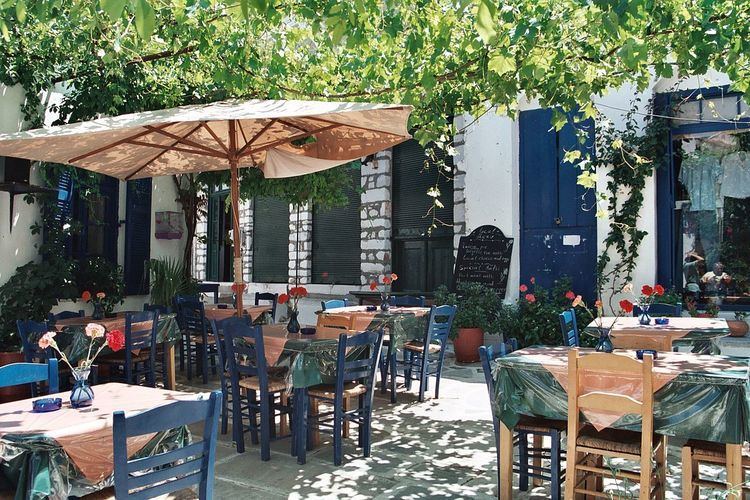 | ||
A taverna (Greek: ταβέρνα) is a small Greek restaurant, similar to a tavern, that serves Greek cuisine. The taverna is an integral part of Greek culture and has become familiar to people from other countries who visit Greece, as well as through the establishment of tavernes (ταβέρνες, plural) in countries such as the United States and Australia by expatriate Greeks.
Contents
Etymology
The Greek term taverna is directly derived from the Latin word taberna meaning "shop", "inn" and "tavern" (originally, taberna meant "hut", "shed" or "rude dwelling").
History
The earliest evidence of a Greek restaurant, or taverna, was discovered at the Ancient Agora of Athens (or Athenian Agora) during archaeological excavations conducted by the American School of Classical Studies in the early 1970s. Large quantities of classical Greek cooking and eating utensils were found at the taverna such as plates, mixing bowls, lidded casseroles, spits for broiling meat, mortars for chopping and grinding, as well as a cooking bell and a variety of jugs. Furthermore, large amounts of fish bones and shellfish remains were discovered revealing the menu specialties of the classical Greek taverna such as oysters, mussels, murex shells, and large fish. A nearby wine shop in the Athenian Agora, possibly in association with the taverna, served local Attic wine, as well as a wide variety of wines imported from Chios, Mende, Corinth, Samos and Lesbos. In the 10th century AD, taverns in the Byzantine Empire that served pure wine were subject to a curfew in order to prevent alcohol-induced "violence and rioting", as documented in the Book of the Eparch 19.
Cuisine
A typical menu for a taverna would usually include many if not all of the following items:
Operations
Tavernes usually open at 12:00, with dinner hours starting at 20:00 and reaching a peak around 22:00. As tourism has grown in Greece, many tavernes have attempted to cater to foreign visitors with English menus and touts or "shills" being employed in many tavernes to attract passing tourists. Similarly, tavernes in tourist areas pay commissions to tour guides who send business their way.
In literature and art
The lead character in the play and film Shirley Valentine written by Willy Russell leaves her husband and family in Liverpool for a vacation where she has an affair with a waiter at the taverna and ends up working in the taverna.
